Table Of Content
- Essential Gear for Building a Safe Campfire
- Lighter or Matches
- Firestarter
- Tinder
- Firewood
- Fire Extinguisher or Water Source
- Choosing the Right Location for Your Campfire
- Factors to Consider When Selecting a Campfire Location
- Why is Choosing the Right Location Important?
- Understanding Different Types of Campfire Structures
- Building a Teepee Campfire
- Constructing a Log Cabin Style Fire
- Mastering the Lean-To Campfire Setup
- Gathering and Preparing Firewood Properly
- Selecting the Right Firewood
- Proper Wood Preparation
- Gathering Firewood Sustainably
- Building a Teepee Campfire for Efficient Burning
- Gather Your Supplies
- Build Your Teepee
- Light It Up!
- Constructing a Log Cabin Style Fire for Long-Lasting Heat
- Gather Your Materials
- Constructing the Fire
- Benefits of a Log Cabin Style Fire
- Mastering the Lean-To Campfire Setup
- Understanding the Lean-To Campfire Setup
- How to Build a Lean-To Campfire
- Benefits of a Lean-To Campfire
- Tips for Starting a Campfire in Wet Conditions
- Shelter Your Fire-Building Area
- Use Dry Kindling
- Employ the Top-Down Method
- Start Small and Gradually Increase the Flame
- Frequently Asked Questions (FAQs)
Building a campfire is not just about lighting a match and watching the flames dance; it is a fundamental skill that connects us to nature and our primal instincts. Understanding the principles of campfire construction will keep you warm and fed and ensure you leave no trace of your presence in the wilderness.
This beginner’s guide will explore various campfire construction techniques tailored to different environments and situations. Whether you are a novice camper looking to kindle your first fire or a seasoned adventurer seeking to enhance your skills, this comprehensive guide will equip you with the knowledge to responsibly build and maintain a campfire.
So, grab your gear, put on your outdoor spirit, and ignite the flames of knowledge as we unlock the secrets of creating the perfect campfire. With our expert tips and tricks for mastering campfire construction techniques, you can elevate your camping experience and craft unforgettable memories under the starlit sky.
Essential Gear for Building a Safe Campfire
Campfires are a quintessential part of the outdoor experience, providing warmth, light, and a sense of camaraderie. But it would be best to have the right tools before you can sit around the crackling flames. Here’s a rundown of the essential gear you’ll need to construct a safe and successful campfire:
Lighter or Matches
Ignition is critical when building a campfire. Pack reliable lighters or waterproof matches to start your fire quickly.
Firestarter
Kindling or fire starter sticks can make the fire-building process much more straightforward. These small but mighty tools help get your flames roaring in no time.
Tinder
Whether dry leaves, grass, or paper, having fuel on hand is crucial for catching the initial spark and getting your fire going. Make sure your fuel is dry to prevent frustrating setbacks.
Firewood
Choose the suitable types of firewood—hardwoods such as oak or maple—that burn hot and long. Ensure the wood is seasoned and dry for an efficient campfire that produces minimal smoke.
Fire Extinguisher or Water Source
Safety should always come first when building a campfire. Keep a fire extinguisher, a bucket of water, or sand nearby to douse any flames that get out of control quickly.
Remember, a well-prepared camper is a happy camper. With these essential tools, you’ll be well-equipped to create a safe and enjoyable campfire experience for you and your fellow outdoor enthusiasts.
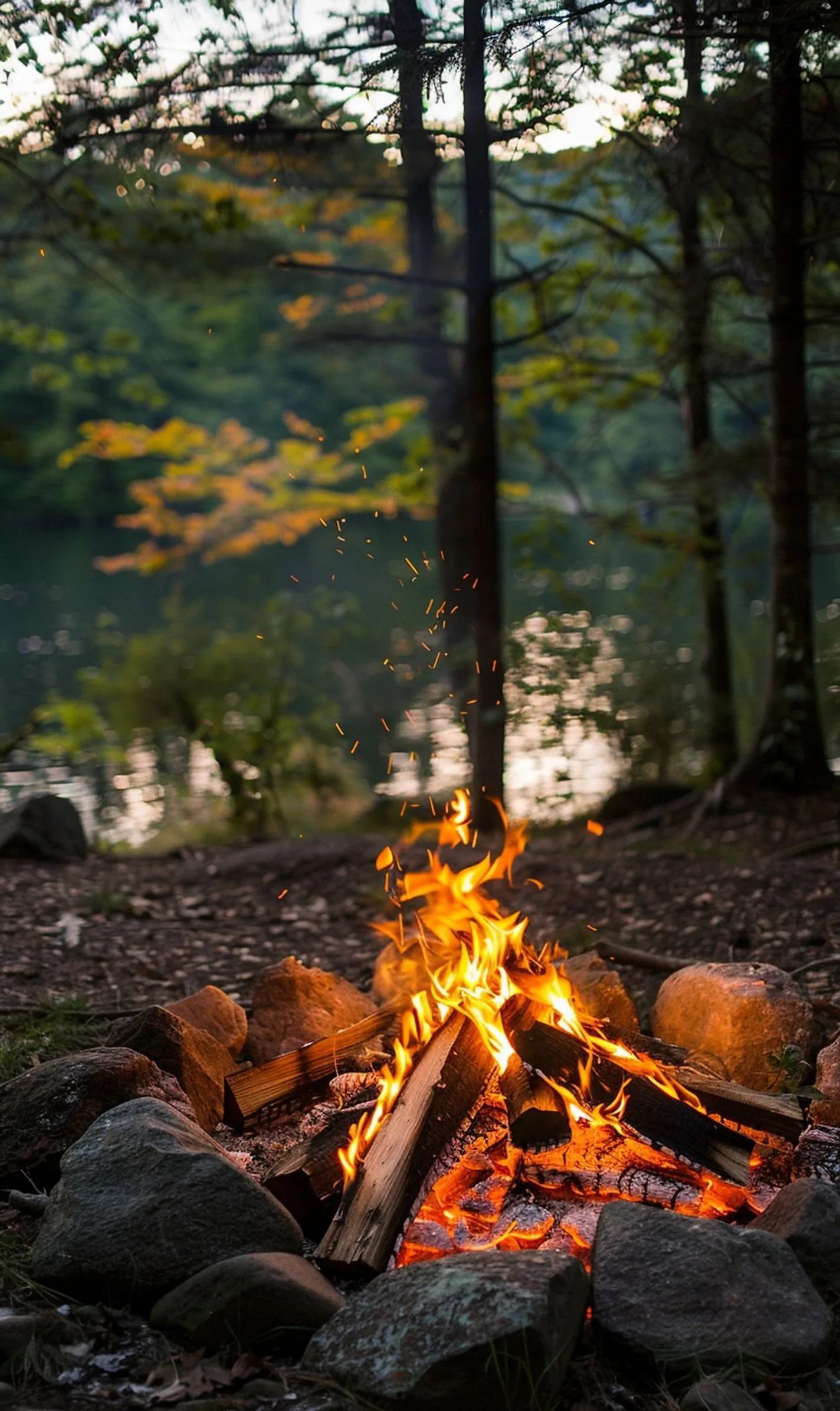
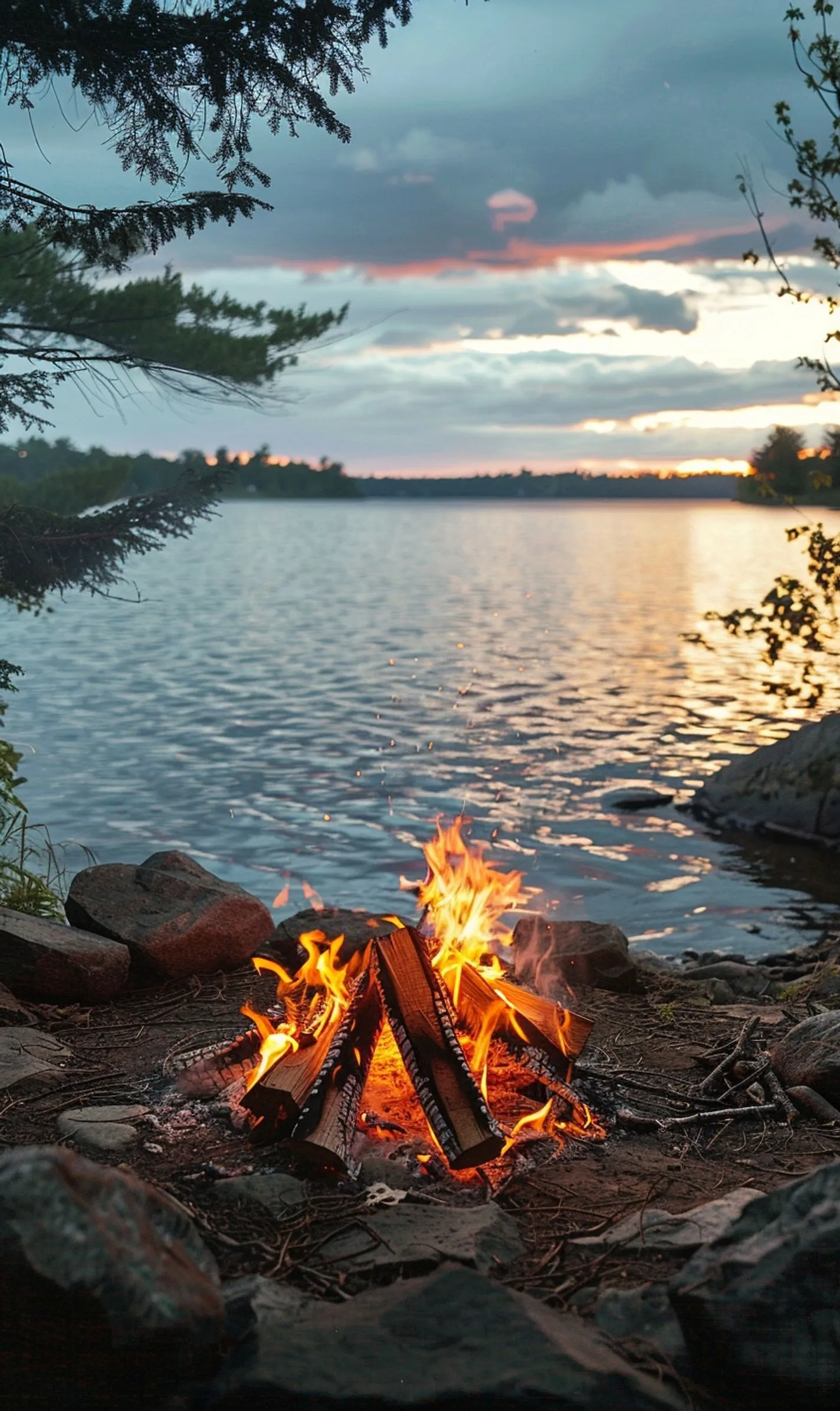
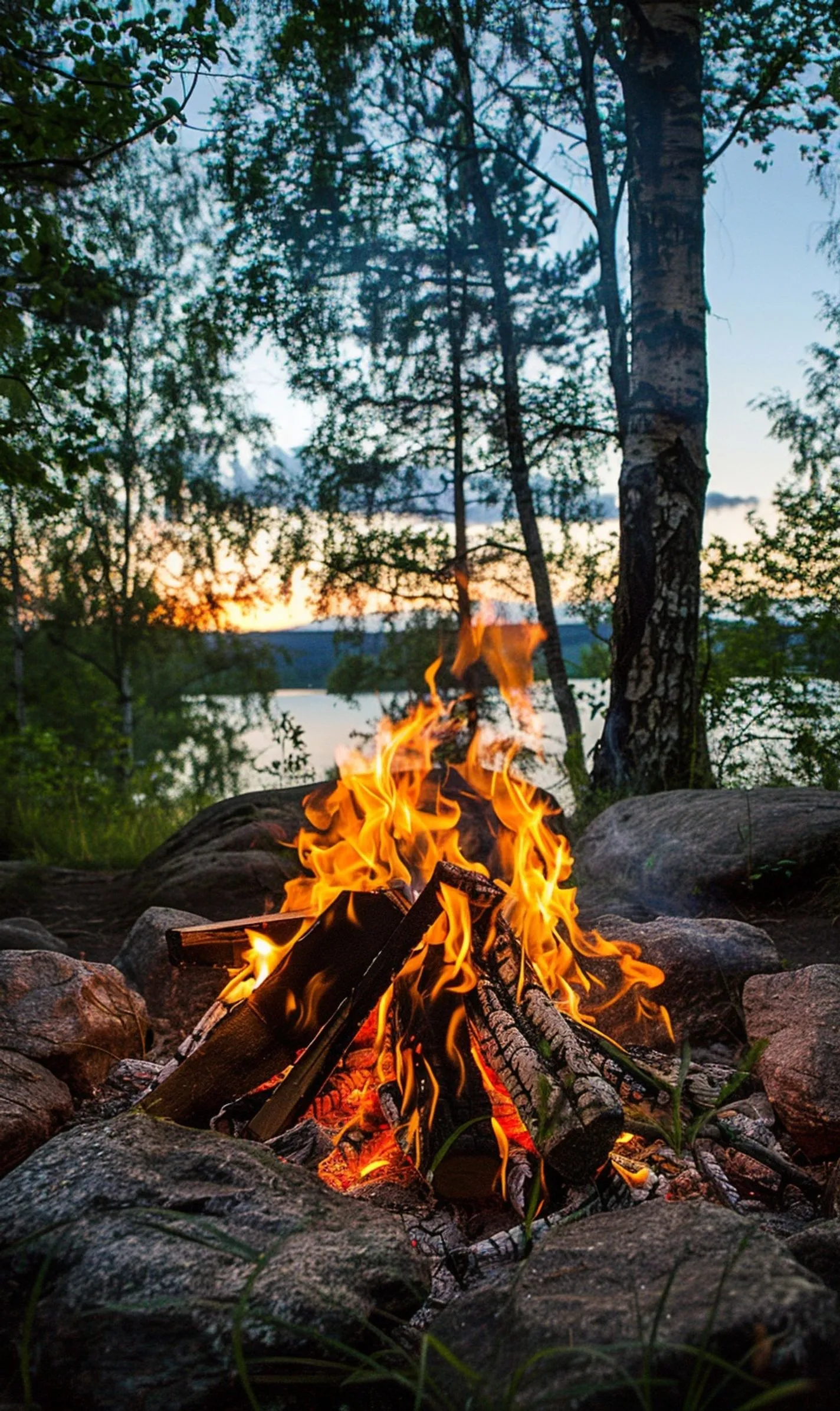
Choosing the Right Location for Your Campfire
Building a campfire is the quintessential outdoor experience, but it must be done safely and responsibly. Campfire construction techniques play a significant role in ensuring a successful and enjoyable camping trip. Choosing the right location is one key factor to consider when setting up a campfire.
Factors to Consider When Selecting a Campfire Location:
- Distance from flammable objects such as tents, trees, and bushes.
- Availability of a clear, flat area free from debris.
- Proximity to a water source in case of emergencies.
- Wind direction to prevent the spreading of embers and smoke.
Remember, a campfire should be placed at least 15 feet away from tent walls, trees, or bushes. Always look for existing fire pits or rings in designated campgrounds to minimize your environmental impact and follow any regulations in place.
Why is Choosing the Right Location Important?
Like finding the perfect spot to watch a sunset, selecting the ideal location for your campfire can enhance your overall camping experience. A well-chosen spot can provide warmth, light, and a cozy ambiance, making it the focal point of your evening.
Conversely, a poorly chosen location can lead to safety hazards, fire damage, and environmental harm. By carefully considering where to build your campfire, you ensure everyone’s safety and contribute to preserving the natural beauty of the outdoors.
Now that you understand the significance of choosing the right location for your campfire, you’re one step closer to mastering essential campfire construction techniques for a memorable outdoor adventure!
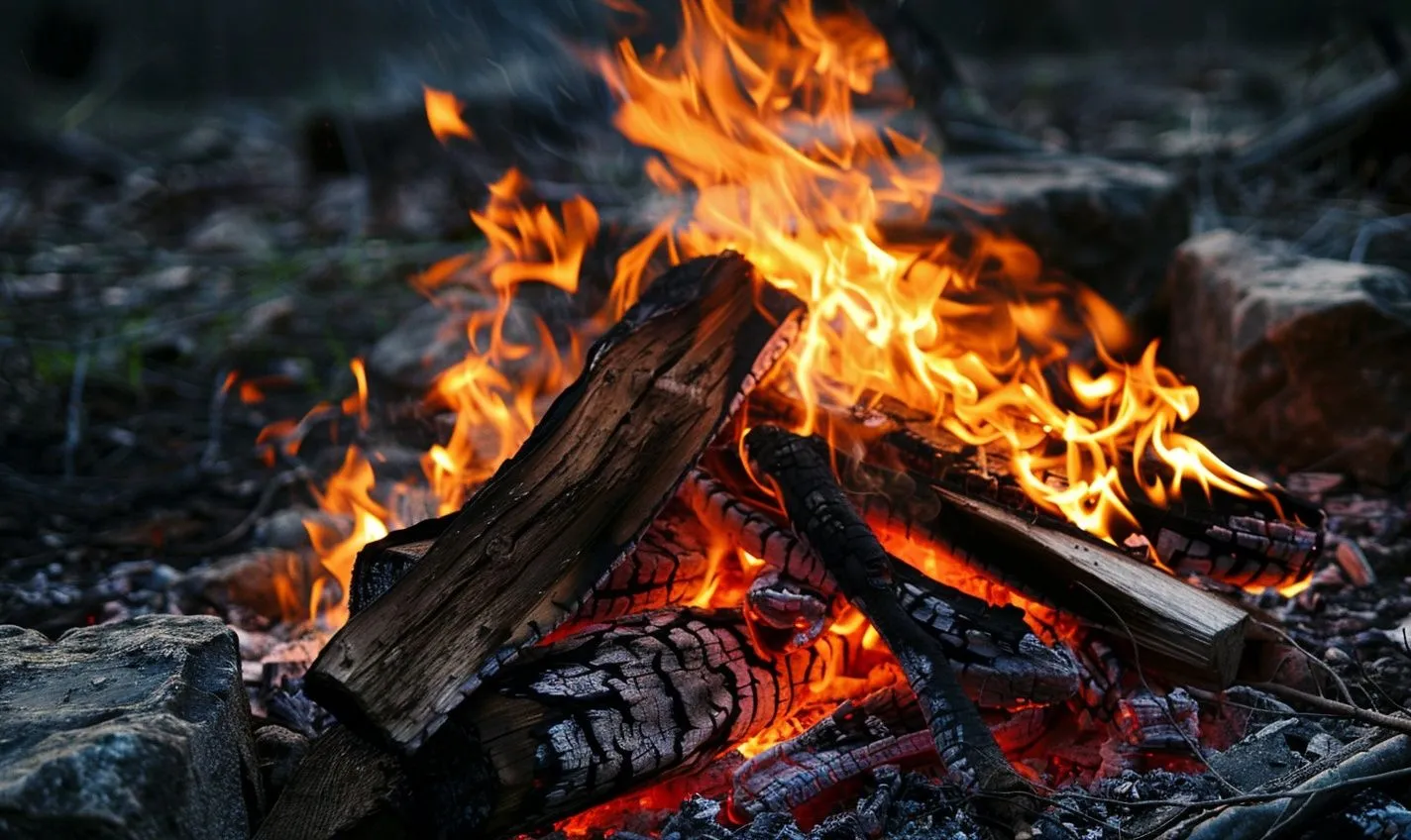
Understanding Different Types of Campfire Structures
Understanding the various campfire construction techniques is crucial for a safe and enjoyable outdoor experience. Each type of campfire structure has its advantages, depending on the situation and the desired outcome.
Building a Teepee Campfire
The teepee campfire is a classic and efficient way to create an intense flame that burns hot and fast. By arranging the wood in a cone shape with kindling in the center, you can quickly start a fire and maintain a good amount of heat.
Constructing a Log Cabin Style Fire
The log cabin-style fire is perfect for long-lasting heat and is ideal for cooking or keeping warm throughout the night. This structure involves stacking the wood in a square formation, allowing for good airflow and steady burning.
Mastering the Lean-To Campfire Setup
The lean-to-campfire setup is excellent for windy conditions, providing a windbreak to protect the flame. You can create a sheltered fire that burns steadily by leaning larger pieces of wood against a central stick.
Understanding these different types of campfire structures gives you the flexibility to adapt to various camping situations. Whether you need a quick flame for cooking, long-lasting heat, or a wind-resistant setup, having the proper knowledge can make all the difference.
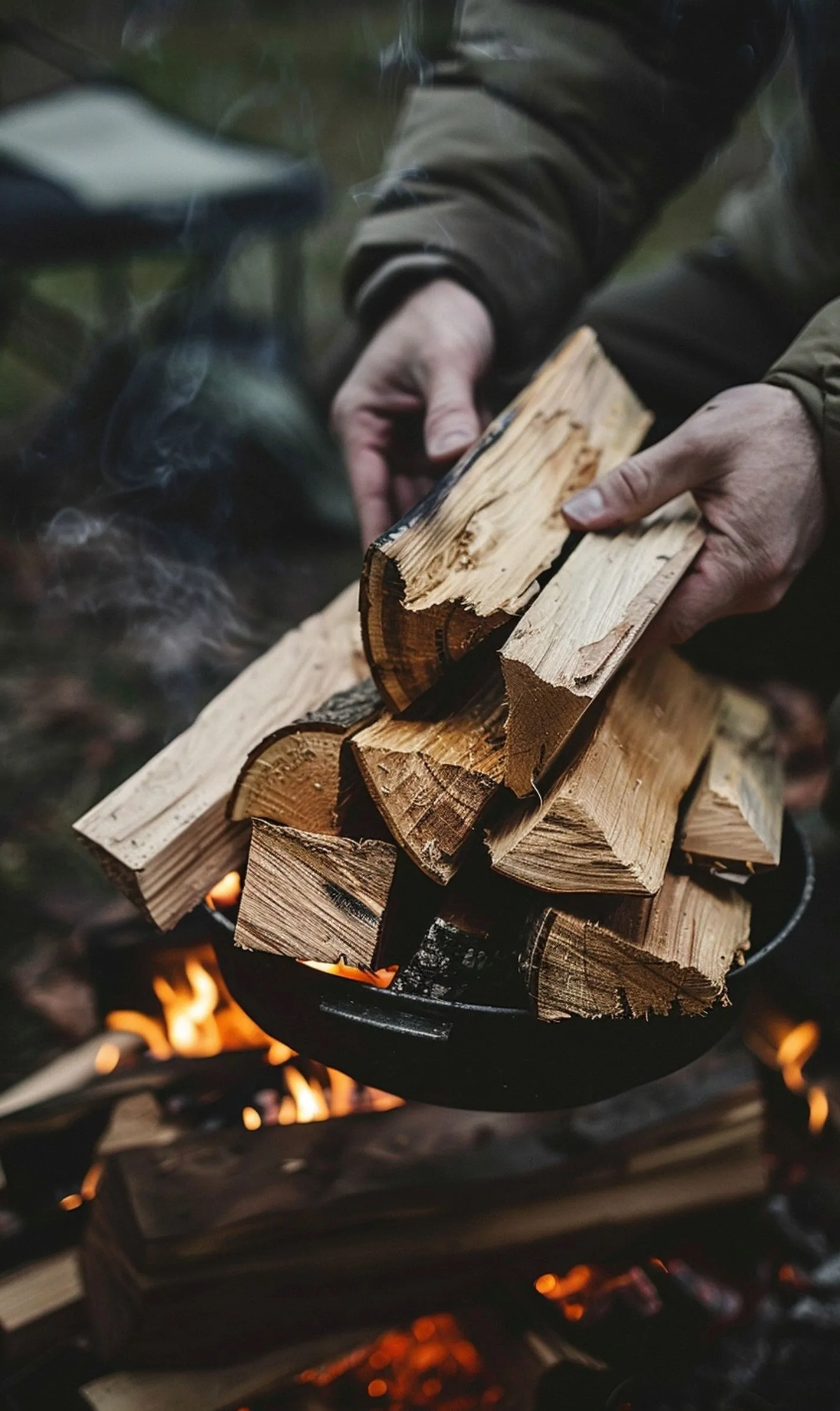
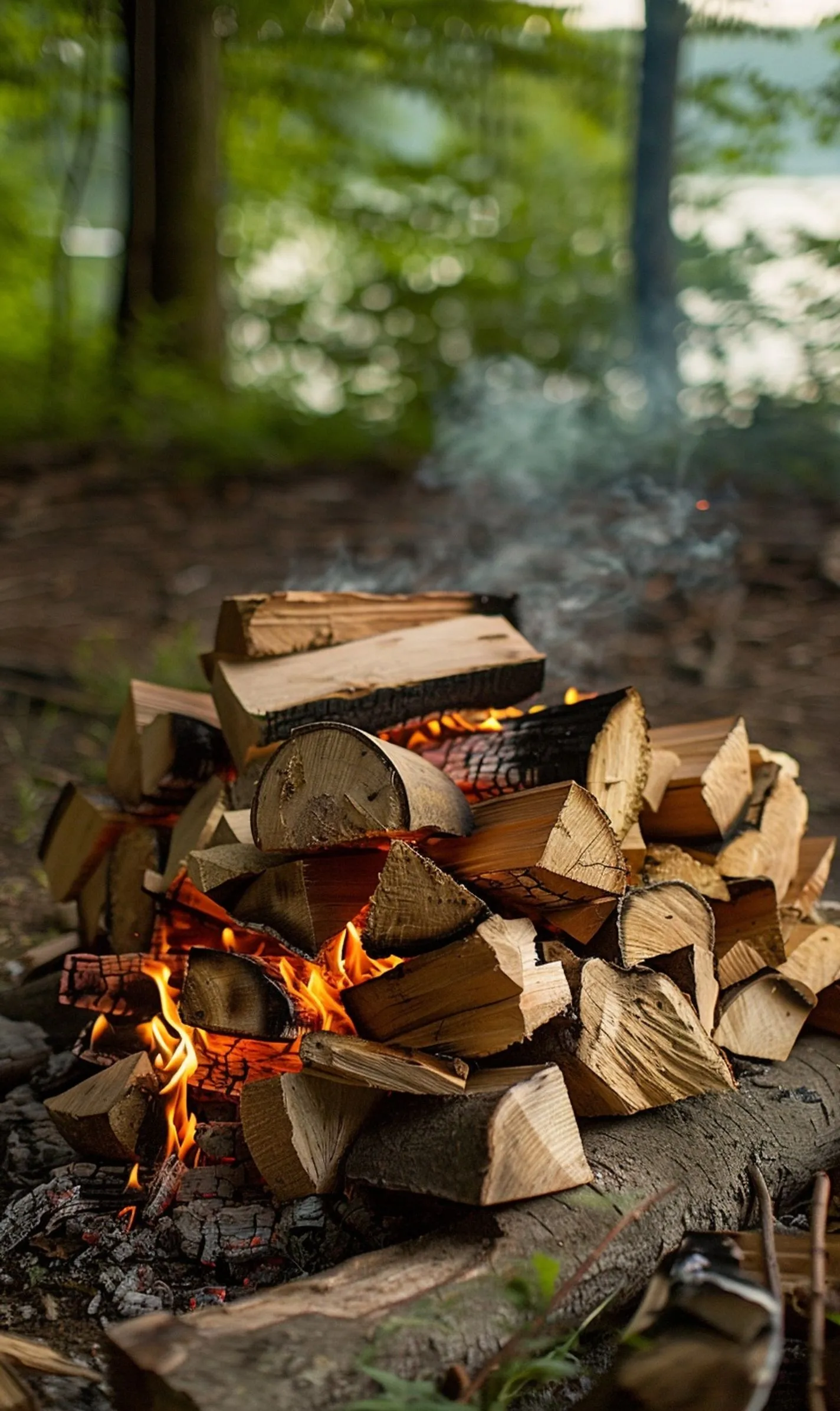
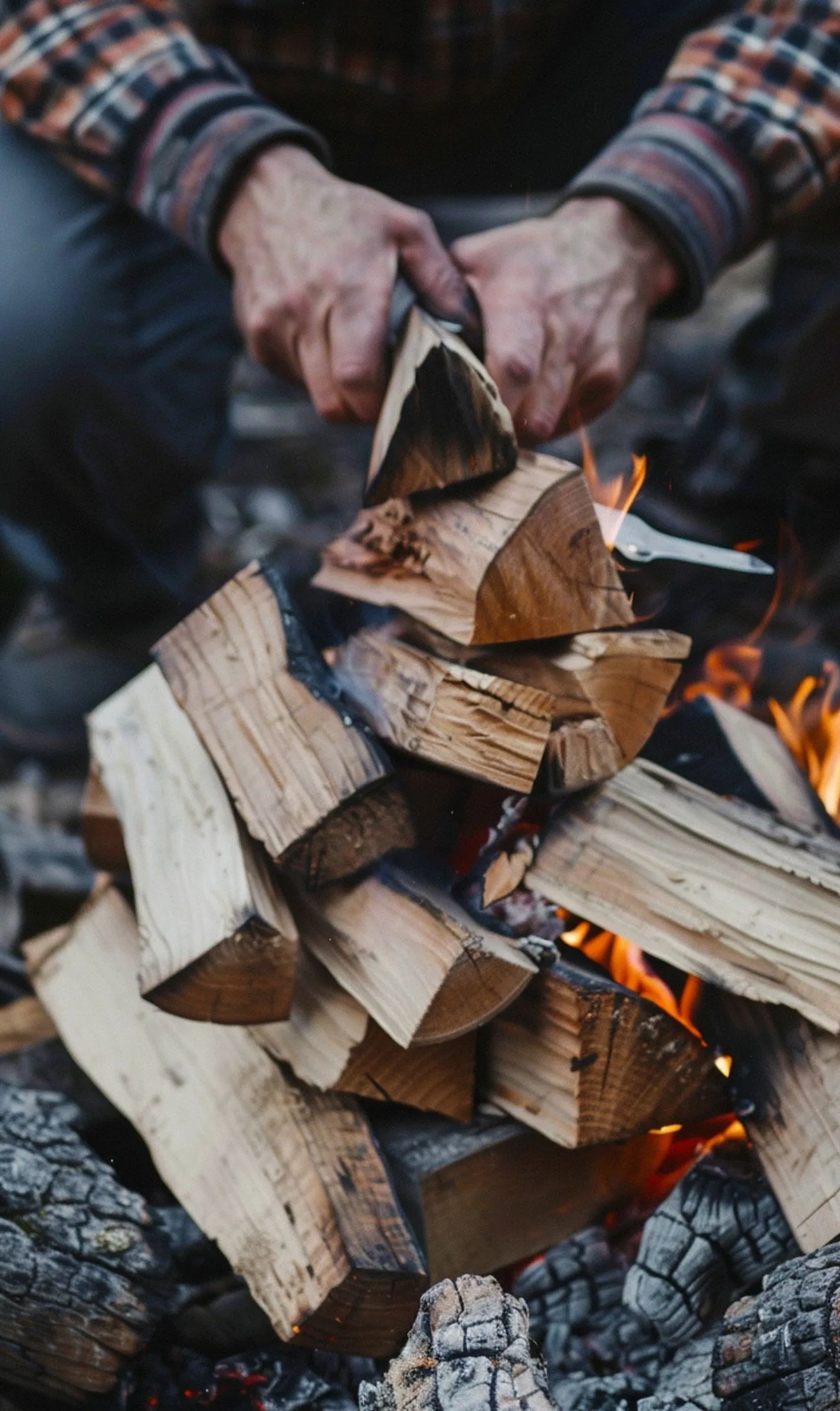
Gathering and Preparing Firewood Properly
Ensuring you have suitable firewood is crucial when building a safe campfire. Here are some tips on how to gather and prepare firewood properly for your campfire:
Selecting the Right Firewood
Start by choosing dry, seasoned firewood over green or damp wood. Dry wood ignites more efficiently and burns cleaner, making it ideal for a campfire.
Proper Wood Preparation
Before starting your campfire, split the firewood into various sizes. This will help you control the fire’s intensity and ensure it burns evenly.
Gathering Firewood Sustainably
Remember to source firewood responsibly and avoid cutting live branches or trees. Look for fallen branches or dead trees to minimize your environmental impact.
Properly preparing your firewood is the first step in establishing a successful and safe campfire. By selecting suitable firewood, splitting it into manageable sizes, and gathering it sustainably, you can ensure a memorable and enjoyable camping experience.
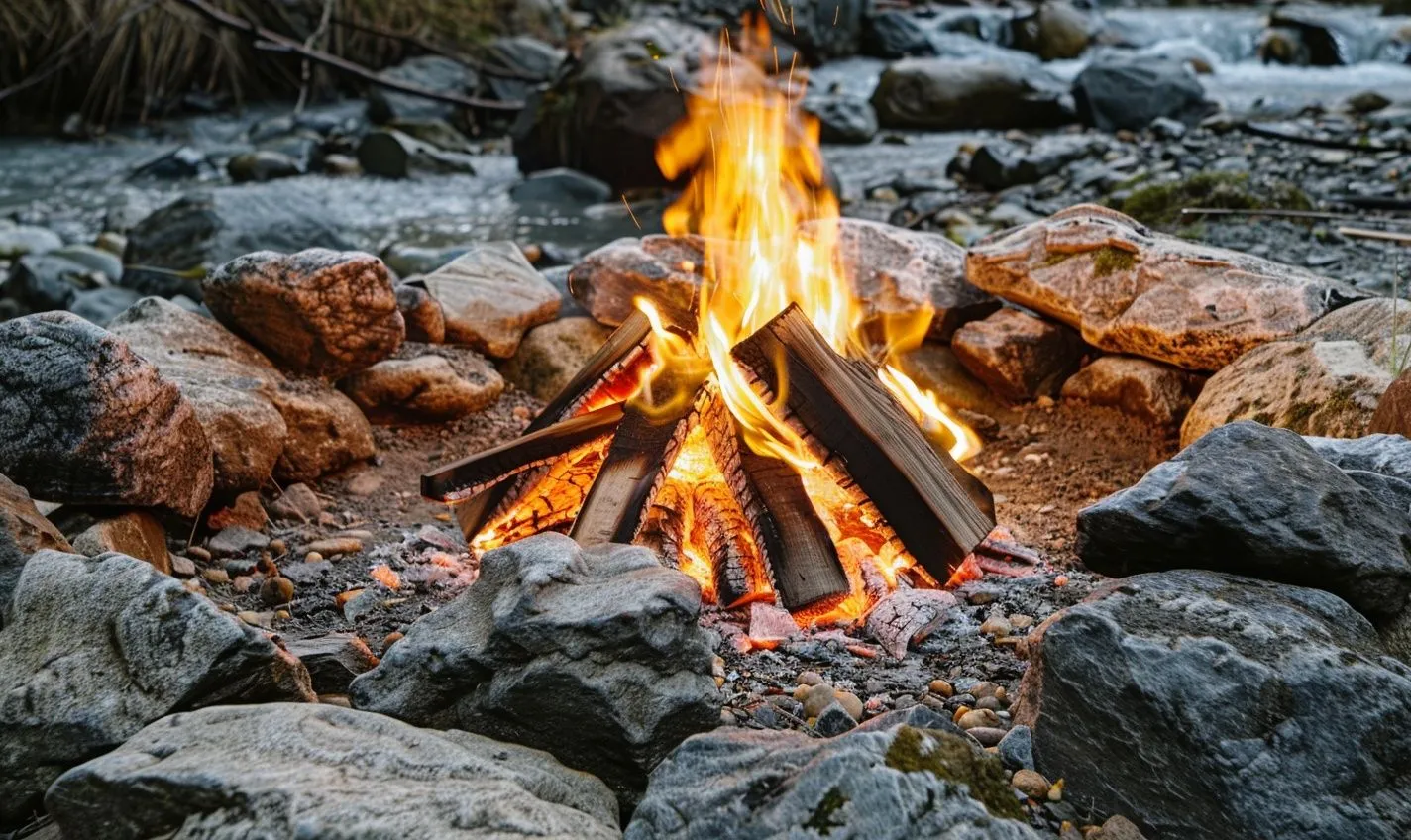
Building a Teepee Campfire for Efficient Burning
Welcome back, fellow campers! So, you’ve found the perfect spot, gathered your firewood, and are ready to light up the night sky. But wait. Have you considered the campfire construction techniques that will ensure an efficient, long-lasting fire? Let’s dive into the art of building a teepee campfire that will keep you warm and mesmerized throughout the night.
Gather Your Supplies
Before beginning your teepee campfire construction, make sure you have all the necessary supplies handy:
- Lighter or matches
- Kindling
- Firewood
Build Your Teepee
Now, let’s get to the fun part! Follow these simple steps to construct a teepee campfire:
- Gather a small pile of kindling in the center of your fire pit.
- Leave an opening in the teepee structure to allow for airflow.
- Surround the kindling with larger pieces of firewood, leaning them against each other to form a teepee shape.
Light It Up!
Once your teepee campfire is built, it’s time to light it up. Take your lighter or matches and carefully ignite the kindling at the center of the teepee structure. As the flames grow, they will naturally catch onto the larger pieces of firewood, creating a beautiful, efficient fire.
And there you have it! A teepee campfire that burns efficiently, providing warmth and light for your camping adventure. Safety comes first, so always keep a close eye on your fire and ensure it is completely extinguished before leaving your campsite. Now, sit back, relax, and enjoy the flickering flames dancing in the night sky. Happy camping!
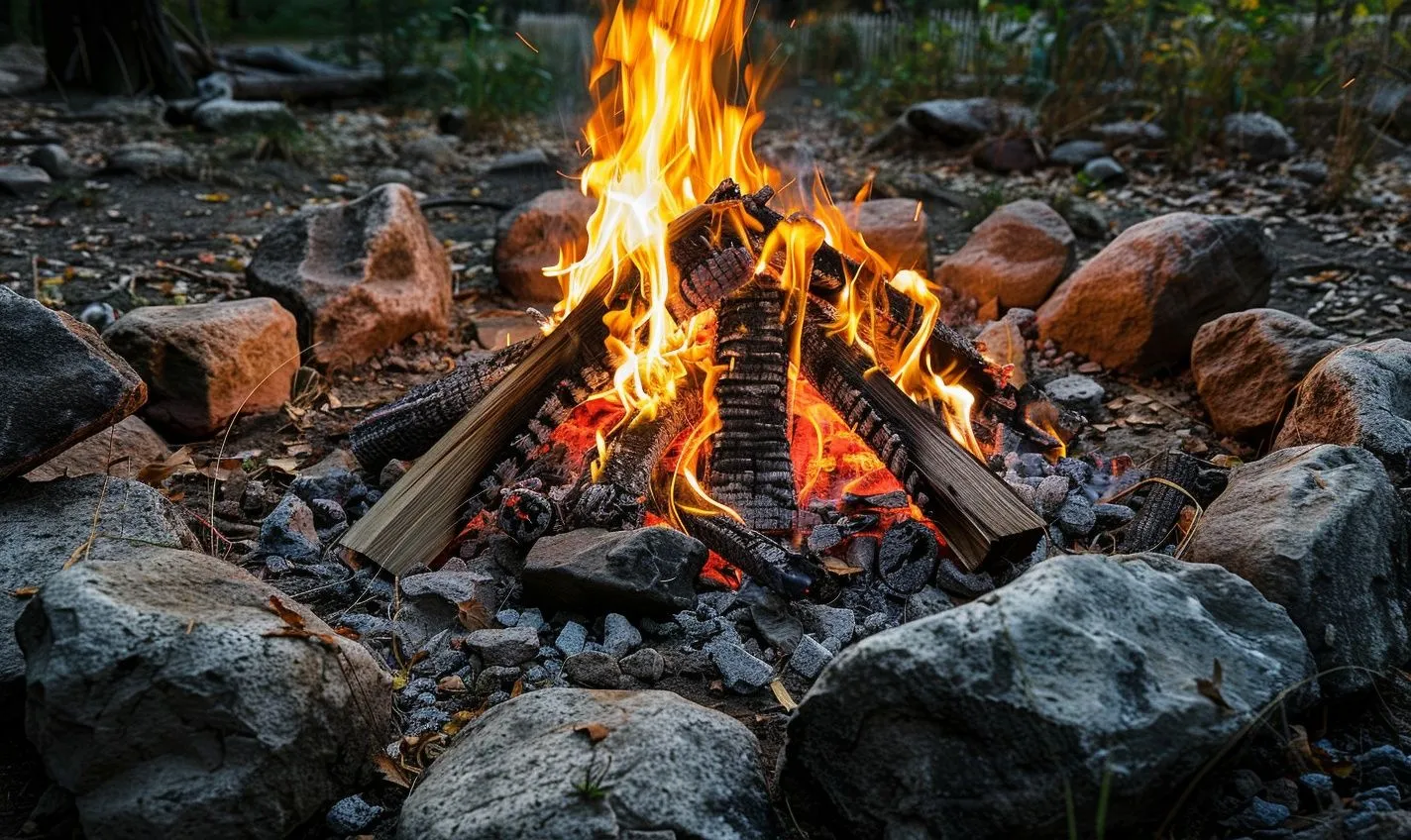
Constructing a Log Cabin Style Fire for Long-Lasting Heat
Imagine sitting around a crackling campfire, feeling the warmth as the flames dance before your eyes. Building a log cabin-style fire is about creating a source of heat and a cozy ambiance that enhances your camping experience. Let’s delve into constructing a fire that provides long-lasting heat.
Gather Your Materials
Before you begin, ensure you have gathered the necessary materials:
- Large Logs: for the base structure
- Tinder: such as dry leaves, twigs, or small wood pieces
- Kindling: small branches or split wood to ignite the fire
- Matches or a Lighter: to start the fire
Constructing the Fire
Follow these steps to build a log cabin-style fire:
- Place two large logs parallel, leaving a small gap between them.
- Stack two more logs on top perpendicular to the base logs, forming a square.
- Add a layer of kindling and tinder on the top of this base layer.
- Continue alternating between logs and kindling, building the layers like a log cabin.
- Leave space between the logs for air to circulate and feed the fire.
Creating this structure allows for optimal airflow, promoting a steady burn that generates a consistent heat output for longer.
Benefits of a Log Cabin Style Fire
Building a log cabin fire offers several advantages:
- Longer-lasting heat due to the slow burn rate created by the structure.
- Stable base that minimizes the risk of the fire collapsing.
- Enhanced visibility of the flames, making it perfect for storytelling and bonding.
So, unleash your inner outdoorsman next time you’re camping and master constructing a log cabin-style fire. Your camping companions will be impressed by your fire-building prowess, and you’ll all enjoy the warmth and glow of a fire that lasts long into the night.
Mastering the Lean-To Campfire Setup
Mastering the lean-to setup is essential for a successful outdoor experience regarding campfire construction techniques. Picture this: you’re surrounded by the peaceful sounds of nature, the crackling of the fire, and the warmth radiating from the flames. But a poorly constructed campfire can quickly turn this picturesque scene into a safety hazard.
Understanding the Lean-To Campfire Setup
The lean-to-campfire setup involves leaning dry sticks or branches against a more extensive log or rock, creating a teepee-like structure. This design allows for proper airflow and helps ignite the fire efficiently.
How to Build a Lean-To Campfire:
- Gather dry tinder, kindling, and fuel wood.
- Place an extensive log or rock as the back support.
- Lean smaller pieces of wood against the support in a teepee formation.
- Add fuel and light the fire from the bottom.
- Gradually add larger fuel wood as the fire grows.
Benefits of a Lean-To Campfire
- Efficient airflow for a quick and hot flame.
- Simple construction with minimal effort.
- There is less risk of the fire spreading uncontrollably.
Building a lean-to-campfire ensures a safe and controlled fire and creates a cozy ambiance for your camping trip. The method is versatile and works well in various weather conditions, making it a valuable skill for any outdoor enthusiast. Remember, a well-constructed campfire is not just about warmth and cooking—it’s about creating unforgettable memories under the starry sky.
Tips for Starting a Campfire in Wet Conditions
Picture this: you’re out in the wilderness, ready to enjoy a cozy campfire under the starlit sky, but a slight drizzle dampens your plans. Don’t fret! Constructing a campfire in wet conditions is not an impossible task. With the proper techniques and determination, you can still enjoy the warmth and camaraderie of a campfire.
Shelter Your Fire-Building Area
Before you start a fire, create a sheltered spot by setting up a tarp or using a large umbrella to dry your fire-building materials.
Use Dry Kindling
Gathering dry kindling is crucial in wet conditions. Look for twigs and small branches under thick tree canopies, rocks, or fallen logs, as these areas are more likely to have dry wood.
Employ the Top-Down Method
When building your campfire structure, utilize the top-down, upside-down fire technique. This technique involves placing larger logs at the bottom and stacking progressively smaller pieces on top. It helps to maintain airflow and ignite the fire effectively.
Start Small and Gradually Increase the Flame
Begin with a small fuel and gradually add larger kindling to sustain the flame. This method allows the fire to build slowly, even in damp conditions, ensuring a successful ignition.
Conclusion
Congratulations on taking the first steps toward becoming a campfire-building pro! By mastering campfire construction techniques, you’ll enjoy cozy nights under the stars and ensure a safe camping experience for you and your fellow adventurers.
Remember, practice makes perfect when it comes to building a roaring campfire. Experiment with different materials, always remember safety, and never leave your campfire unattended.
With the knowledge and skills you’ve gained from this beginner’s guide, you’re well-equipped to impress your camping companions with your campfire prowess. Whether using the teepee, log cabin, or lean-to method, you now have the tools to create a warm and inviting campfire setup.
So, grab your marshmallows, gather around the flickering flames, and make memories that will last a lifetime. Stay safe, have fun, and enjoy the magic of a well-constructed campfire on your next outdoor adventure!
Frequently Asked Questions (FAQs)
What are the essential campfire construction techniques?
The essential campfire construction techniques include the teepee, lean-to, and log cabin methods. Each has its benefits depending on the cooking style and wood availability.
What is the teepee campfire construction technique?
The teepee method involves arranging kindling and wood in cones to allow for good airflow. It is ideal for producing a high flame for quick cooking.
How can the lean-to method be used for campfire construction?
The lean-to technique involves leaning larger pieces of wood against one another with kindling underneath. It provides a stable structure for a slow-burning fire.
Is the log cabin campfire construction technique suitable for camp cooking?
The log cabin method is excellent for creating a long-lasting fire that produces consistent heat. It makes a sturdy platform for cooking over coals rather than flames.
Why is it essential to clear the area around the campfire before construction?
Clearing the area helps prevent the spread of fire and reduces the risk of accidents. Remove any dry leaves, brush, or debris that could catch fire.
What type of wood is best for a campfire?
Hardwoods like oak, maple, and hickory are ideal for campfires as they burn longer and produce more heat. Avoid using softwoods that can pop and create sparks.







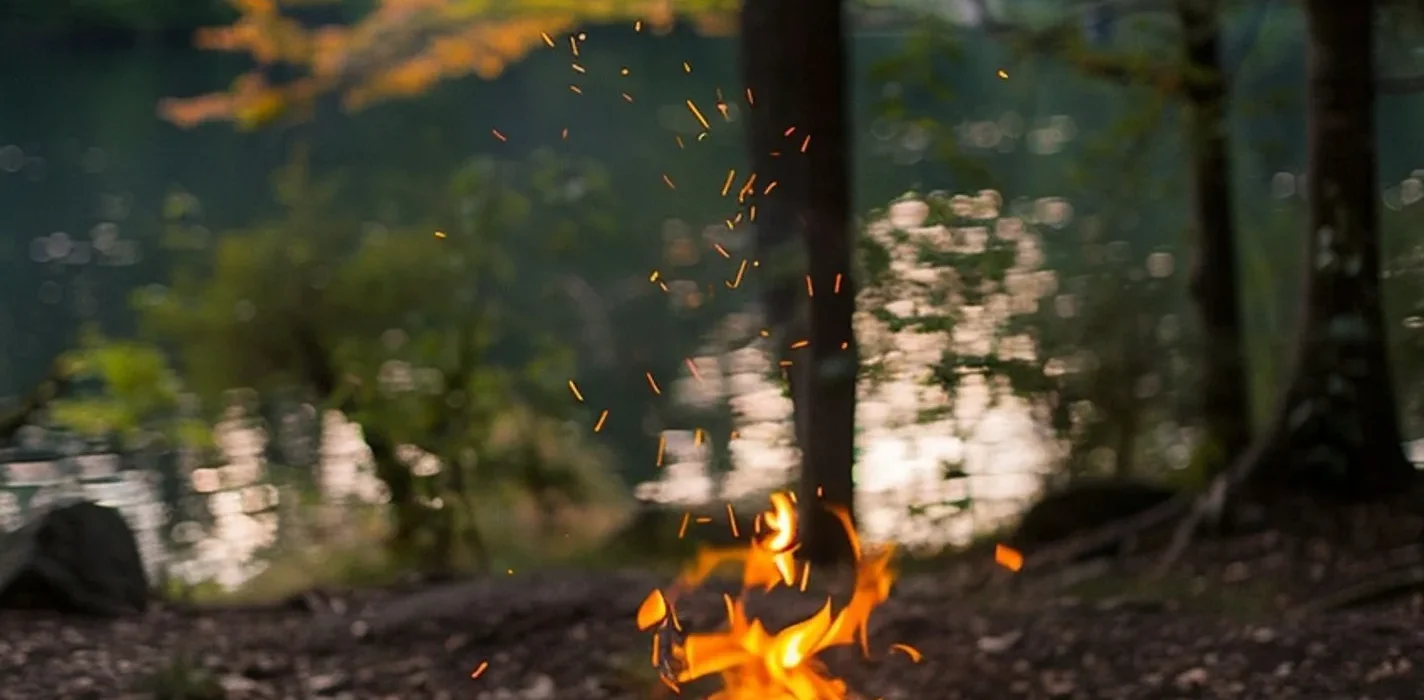
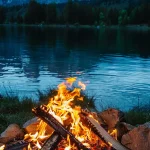
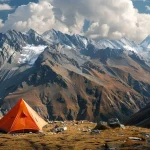
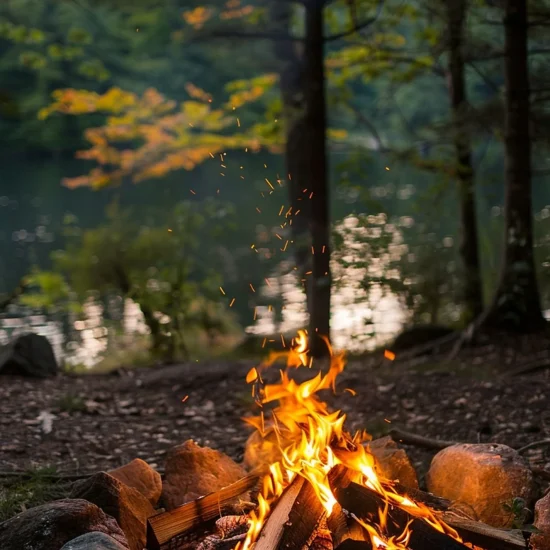
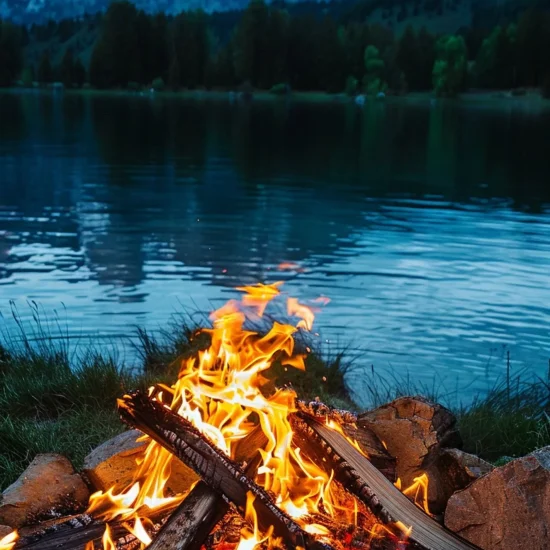
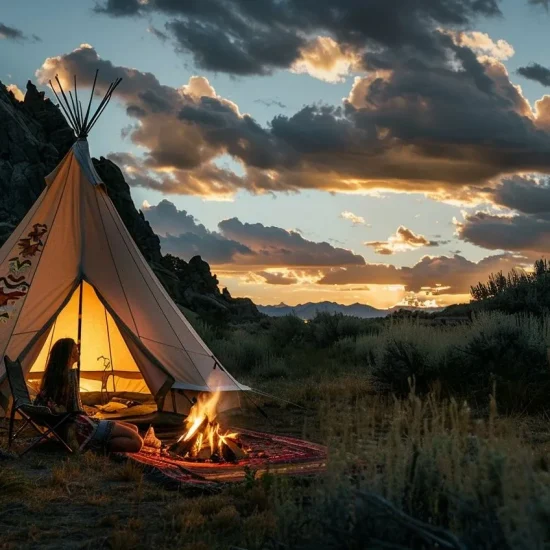
No Comment! Be the first one.